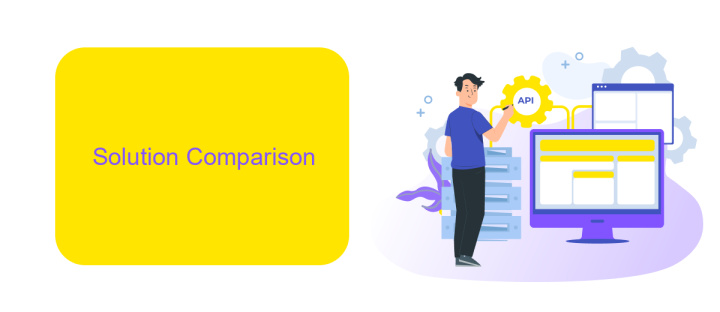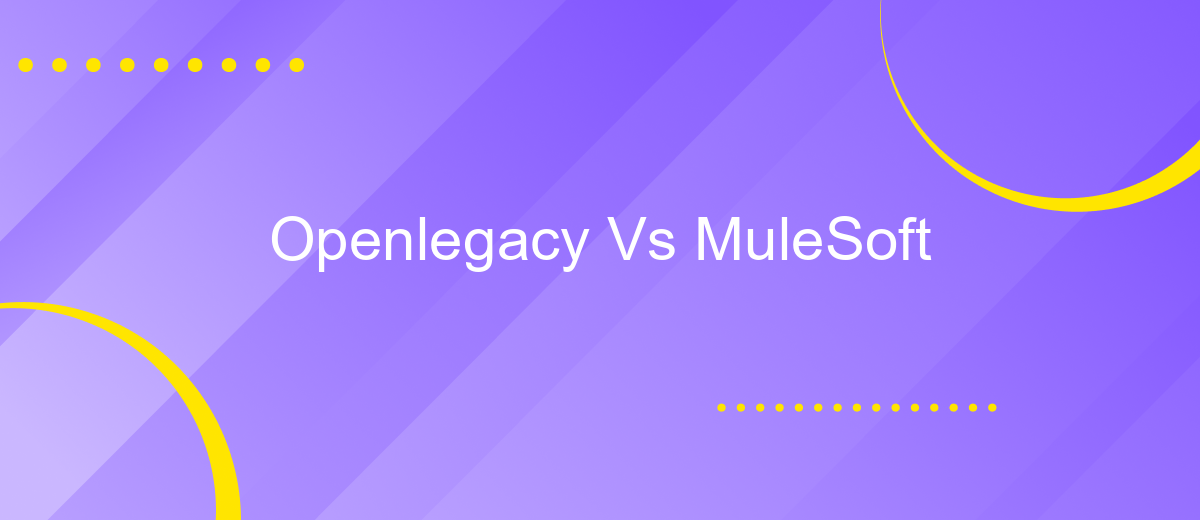Openlegacy Vs MuleSoft
In the rapidly evolving landscape of digital transformation, choosing the right integration platform is crucial for business success. This article delves into a detailed comparison between OpenLegacy and MuleSoft, two leading integration solutions. By examining their features, capabilities, and unique strengths, we aim to provide insights that will help organizations make an informed decision tailored to their specific needs.
Introduction
In today's fast-paced digital landscape, businesses are constantly seeking efficient ways to integrate their numerous applications and systems. OpenLegacy and MuleSoft are two prominent platforms that offer robust solutions for API integration and legacy modernization. Both platforms have unique features and capabilities, making them suitable for different organizational needs.
- OpenLegacy: Specializes in legacy system modernization, providing tools to create APIs directly from mainframes and other legacy systems.
- MuleSoft: Known for its comprehensive Anypoint Platform, which offers a wide range of integration tools and connectors for various applications and services.
- ApiX-Drive: A versatile service that simplifies the process of setting up integrations, making it easier for businesses to connect multiple applications without extensive coding.
Choosing between OpenLegacy and MuleSoft depends on various factors, including the specific integration requirements, existing infrastructure, and long-term business goals. Understanding the strengths and limitations of each platform can help organizations make an informed decision, ensuring seamless and efficient integration processes.
Solution Comparison

When comparing OpenLegacy and MuleSoft, it's essential to consider their core functionalities and integration capabilities. OpenLegacy offers a streamlined approach to modernizing legacy systems, focusing on simplifying the process of creating APIs from legacy applications. It provides robust tools for transforming old systems into modern, cloud-native applications without extensive rewrites. On the other hand, MuleSoft is known for its comprehensive Anypoint Platform, which facilitates end-to-end API management, integration, and connectivity across various systems and services. MuleSoft's strength lies in its ability to connect diverse applications, data, and devices through a unified platform.
In terms of integration, both platforms offer unique advantages. OpenLegacy excels in scenarios where rapid legacy system modernization is required, providing a direct path to API creation and deployment. MuleSoft, however, offers a more extensive suite of tools for broader integration needs, including API lifecycle management and advanced analytics. For businesses looking to simplify their integration processes, services like ApiX-Drive can be highly beneficial. ApiX-Drive automates data transfer between various apps and services, enhancing the efficiency of both OpenLegacy and MuleSoft implementations. Ultimately, the choice between OpenLegacy and MuleSoft depends on the specific integration requirements and modernization goals of the organization.
Benefits of OpenLegacy

OpenLegacy offers a range of advantages for businesses looking to modernize their legacy systems. Its innovative approach ensures seamless integration with existing infrastructure, reducing the need for extensive rewrites and minimizing downtime.
- Rapid Deployment: OpenLegacy enables quick deployment of API-driven solutions, allowing businesses to accelerate their digital transformation journey.
- Cost-Efficiency: By leveraging existing legacy systems, organizations can save on costs associated with building new systems from scratch.
- Scalability: The platform supports scalable integration solutions, ensuring that businesses can grow and adapt their IT infrastructure as needed.
- Enhanced Security: OpenLegacy provides robust security features, ensuring that data remains protected throughout the integration process.
- Flexibility: With its open architecture, OpenLegacy allows for easy customization to meet specific business requirements.
Additionally, OpenLegacy's compatibility with services like ApiX-Drive further enhances its integration capabilities. ApiX-Drive offers powerful tools for automating and managing integrations, making it easier for businesses to connect various applications and services seamlessly. This combination ensures a more efficient and streamlined approach to legacy system modernization.
Benefits of MuleSoft

MuleSoft is a powerful integration platform that enables businesses to connect various applications, data sources, and APIs seamlessly. One of its standout features is the Anypoint Platform, which provides a unified solution for API management, design, and development.
With MuleSoft, organizations can achieve faster time to market by leveraging its pre-built connectors and templates. This reduces the complexity of integration projects and allows developers to focus on creating value rather than dealing with integration challenges.
- Comprehensive API management
- High scalability and flexibility
- Robust security features
- Extensive library of connectors
- Efficient data transformation capabilities
Moreover, MuleSoft's platform is designed to support both on-premises and cloud-based deployments, offering flexibility to meet various business needs. For businesses looking to streamline their integration processes further, services like ApiX-Drive can complement MuleSoft by automating data transfers between different systems, enhancing overall efficiency and productivity.
Conclusion
In conclusion, both OpenLegacy and MuleSoft offer robust solutions for API integration and legacy system modernization. OpenLegacy excels in simplifying the process of integrating legacy systems with modern applications, making it an ideal choice for enterprises looking to leverage their existing infrastructure. MuleSoft, on the other hand, provides a comprehensive integration platform that supports a wide range of use cases, from simple API management to complex enterprise service bus (ESB) implementations.
When considering the best solution for your organization, it is crucial to evaluate your specific needs and existing technology stack. Tools like ApiX-Drive can further enhance your integration efforts by providing a seamless way to connect various applications and automate workflows. Ultimately, the choice between OpenLegacy and MuleSoft will depend on your organization's unique requirements, but both platforms offer powerful capabilities to drive digital transformation and operational efficiency.


FAQ
What are the main differences between OpenLegacy and MuleSoft?
Which platform is more suitable for a large enterprise with complex integration needs?
Can OpenLegacy and MuleSoft be used together?
What are the deployment options for OpenLegacy and MuleSoft?
Are there services available to help implement and configure these platforms?
Do you want to achieve your goals in business, career and life faster and better? Do it with ApiX-Drive – a tool that will remove a significant part of the routine from workflows and free up additional time to achieve your goals. Test the capabilities of Apix-Drive for free – see for yourself the effectiveness of the tool.

